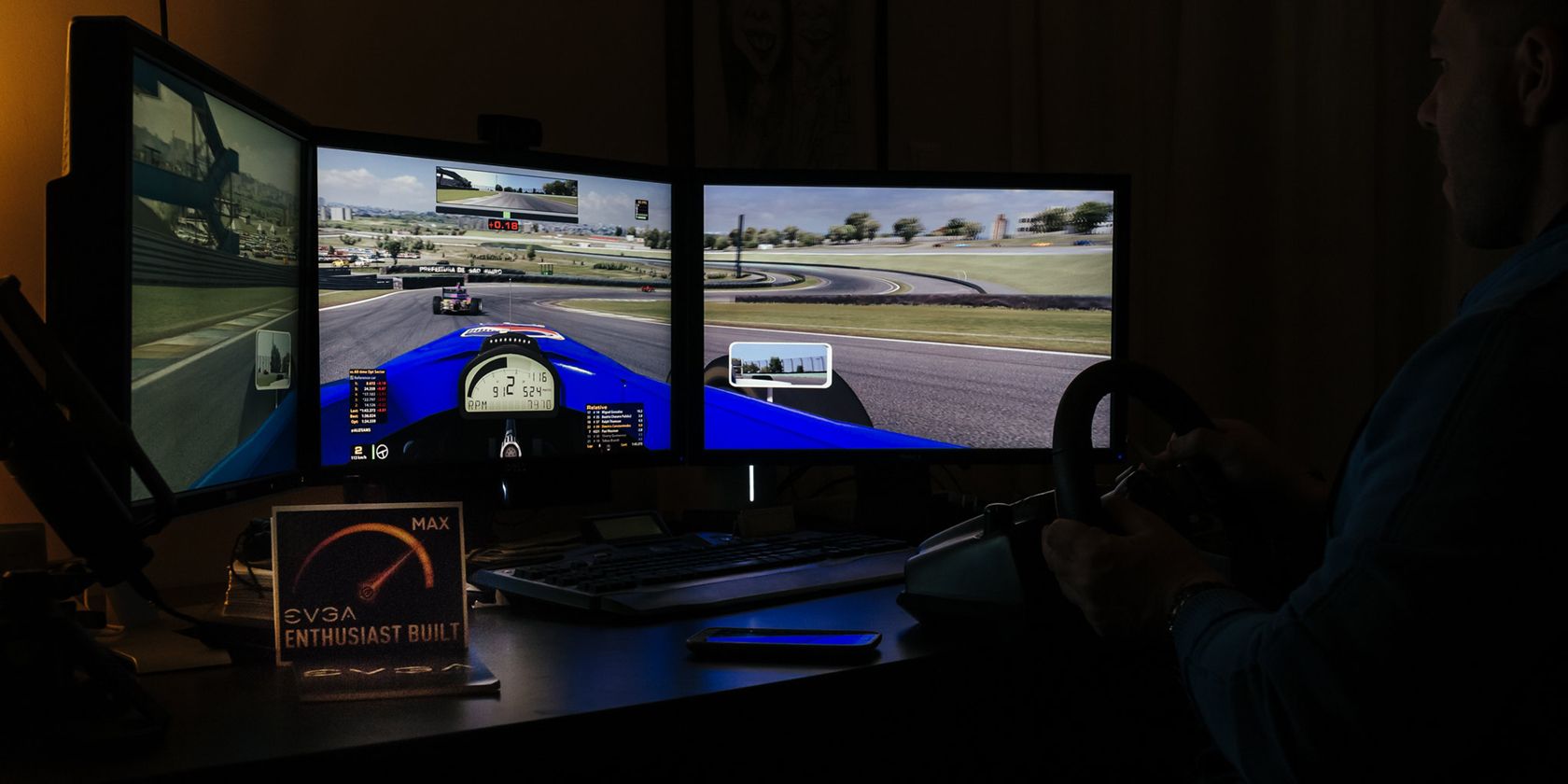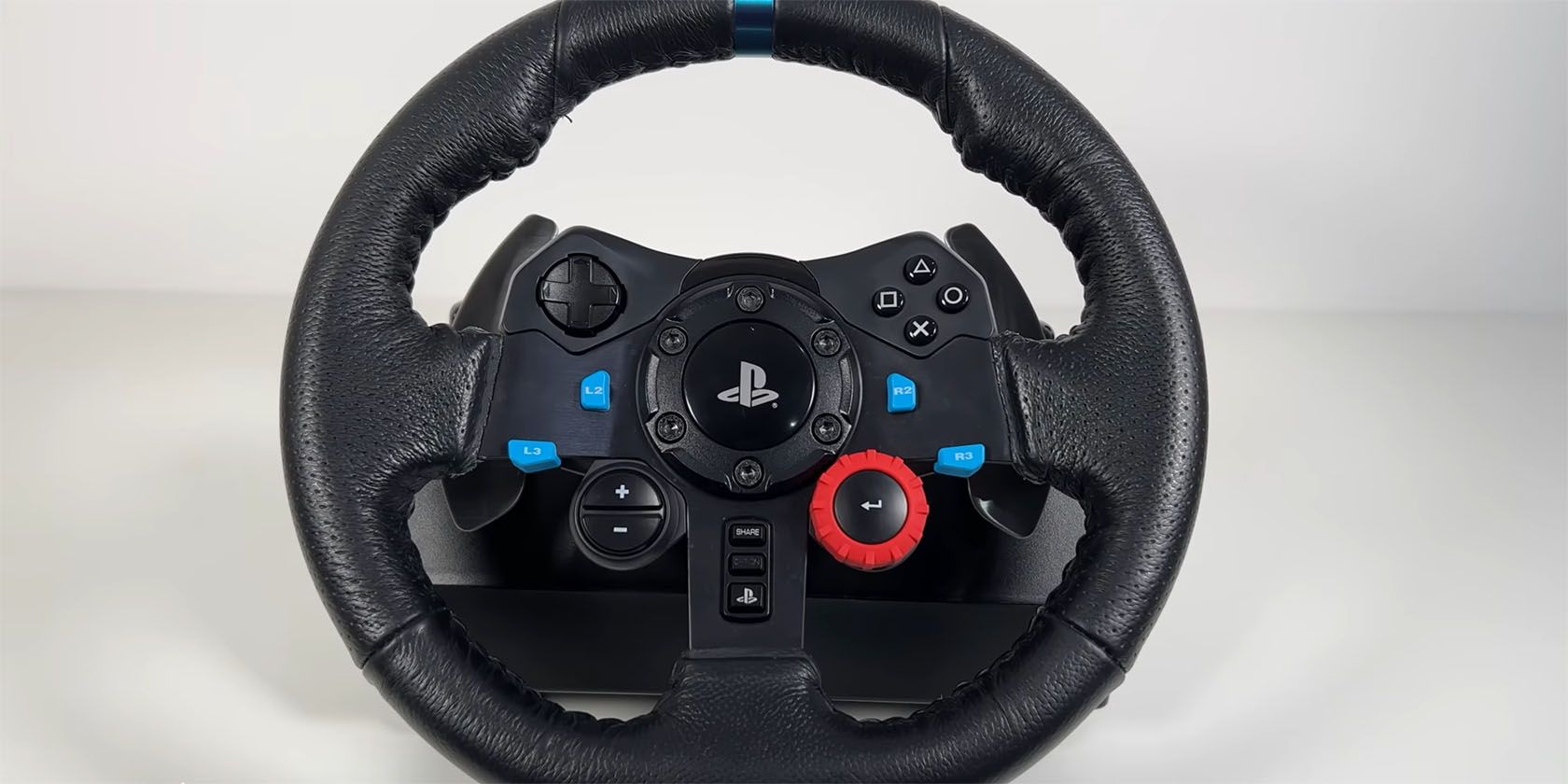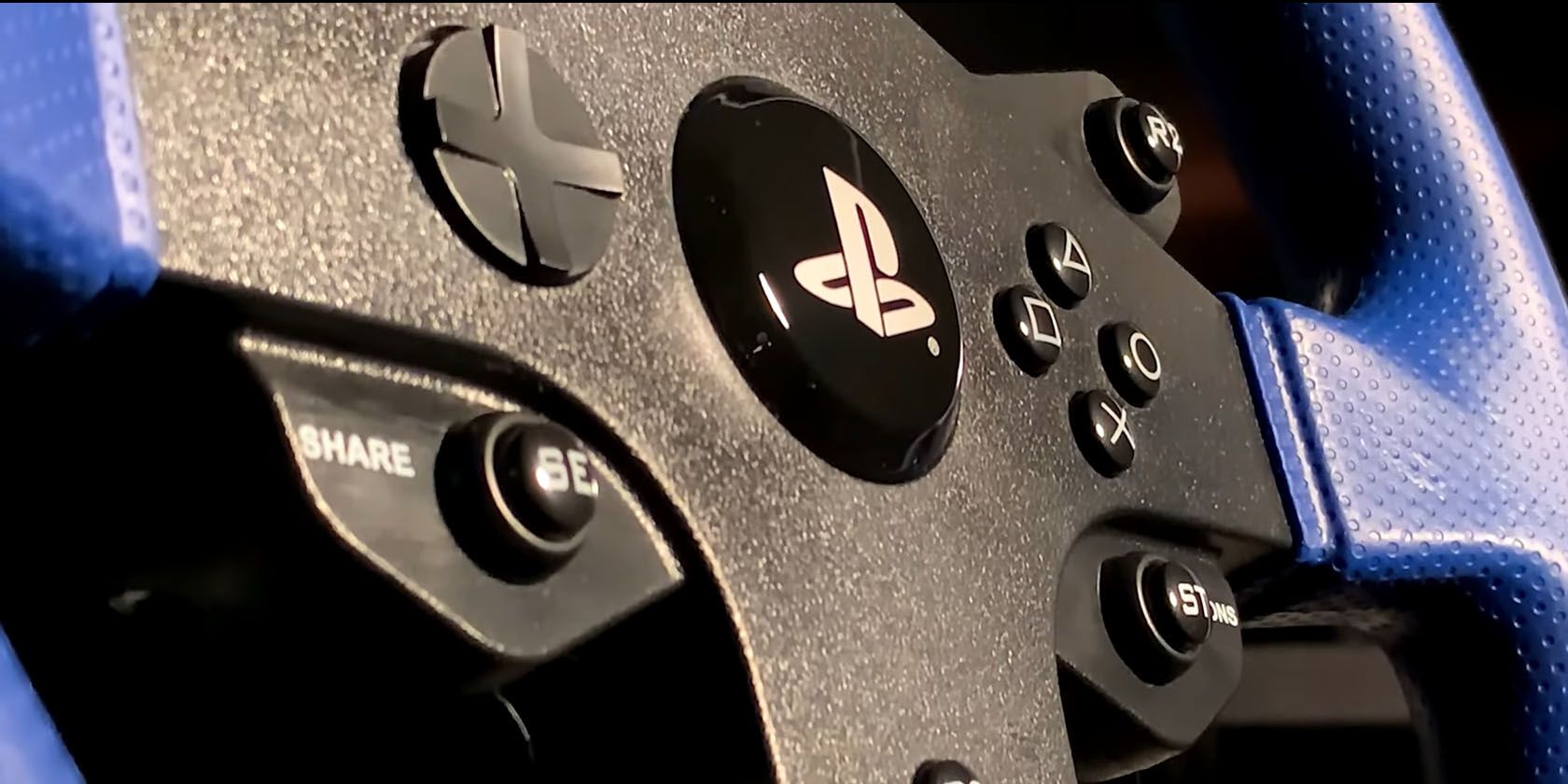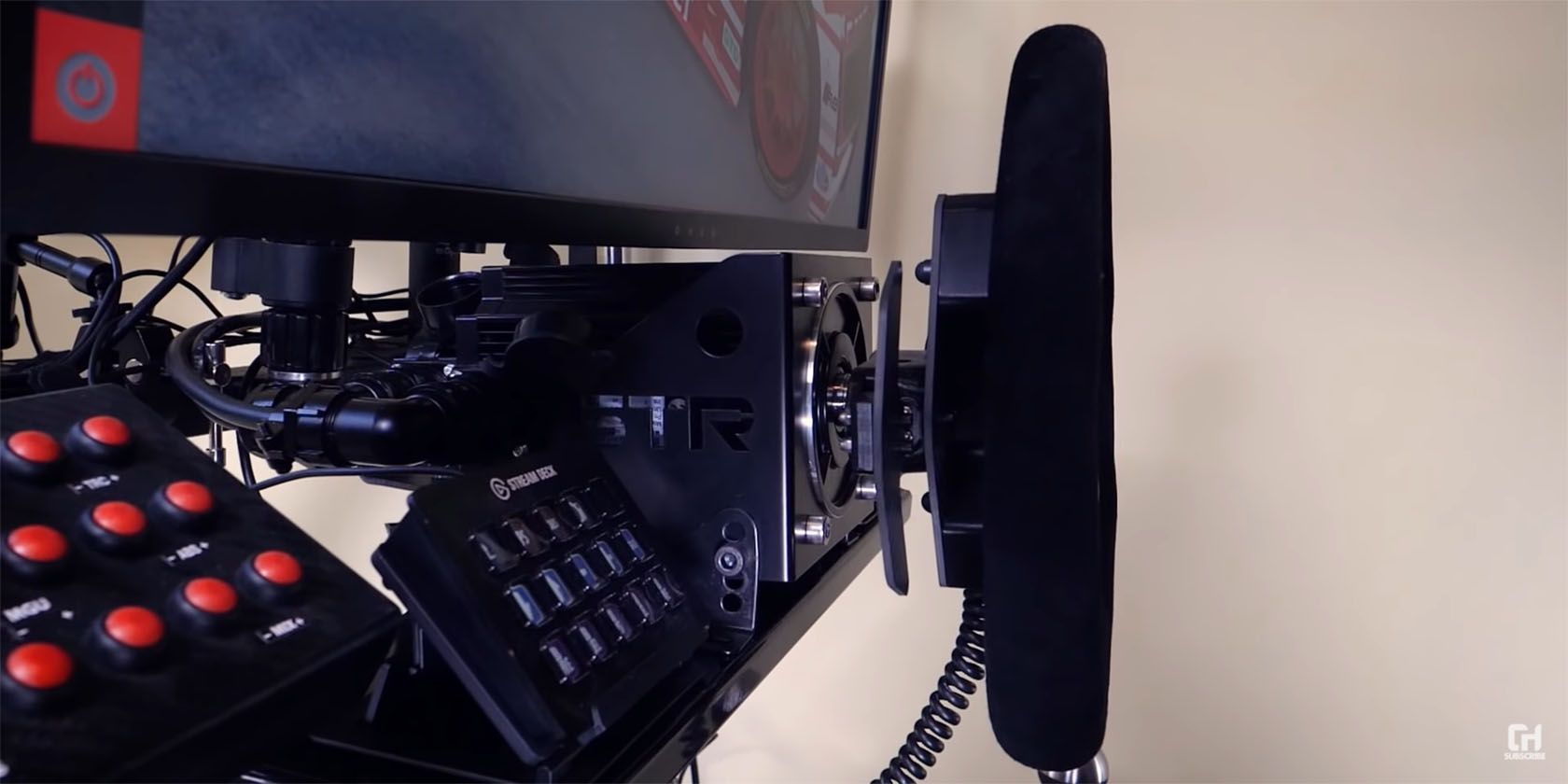The steering wheel is the only element of many entry-level sim racing setups. Sim racing steering wheels come in a wide variety, and this variety isn't sprouted from the brand and shape only. Steering wheels have different structures and mechanisms as well.
The main deciding factor here is the feedback. The stronger the feedback on your wheel, the more immersive your racing experience will be. In this article, we take a look at the main sim racing wheels based on their feedback types.
Why Is Steering Wheel Feedback So Important?
In a real car, the steering wheel is connected to the front wheels. When you steer this steering wheel, the real wheels turn. Conversely, the steering wheel also moves if the front wheels are turned by an external force.
The steering wheel feedback is one of the main physical feedbacks that a race driver gets from their car. If the car is rattling, this is best felt through the steering wheel as the driver is holding it with both hands.
A good simulation experience should also include the steering wheel feedback. This is done through motors in sim racing steering wheels. The more strength and precision the sim racing steering wheel has, the more accurate the experience will be.
Different technologies are deployed in sim racing steering wheels, and each comes with its own pros and cons.
Gear-Drive Steering Wheels
These are entry-level sim racing wheels designed for those looking for a casual experience on a budget. Gear-drive steering wheels use a gear system to relay and amplify the feedback torque. These wheels use a small motor that doesn't produce much torque on its own. The motor is connected to gears, and this amplifies the torque, giving you a sense of feedback.
As mentioned before, the gear-drive steering wheels use a small motor. This leads to one of the core advantages of the gear-drive steering wheels: Low price.
These small motors don't produce much torque even when the force is amplified by the gear system, so the feedback is weak compared to expensive steering wheels. The gears also might occasionally jump, skipping a cog or two, which leads to torque jumps.
Since gear-drive wheels are mostly meant to be cheap and affordable, some manufacturers use cheaper materials in making these wheels. This leads to them breaking down in less time than more expensive wheels. These wheels are ideal if you're simply exploring whether sim racing is ideal for you.
With a gear-drive wheel, you can get a good glimpse of the sim racing experience and see if you like it at all. However, if you're certain that you want to pursue sim racing, and have money to spare for an amateur setup, then invest in a belt-driven racing wheel.
Belt-Drive Steering Wheels
Belt-drive steering wheels use a belt and pulley system to amplify the torque created by the motor. The motor in these wheels is also small, but the belt does a good job of amplifying the torque.
The belt also absorbs the shock and returns smooth feedback. This is both a curse and a blessing. The belt absorbs the shocks so that there aren't any unintended torque jumps like the ones in a gear-drive racing wheel. On the other hand, the belt also absorbs the intended sudden torques, smoothing them out as well, which can lead to an unrealistic experience.
The main advantage of a belt-drive steering wheel to a gear-drive one is the stronger feedback. This strength isn't acquired through a stronger motor—but rather through a more efficient conversion system.
The belt on a belt-drive steering wheel is prone to erosion. The more this belt gets used, the more it wears out, and at some point, it's going to need a replacement. Otherwise, it might get torn completely and result in failure.
Belt-drive steering wheels are the perfect choice for beginners. You can use these wheels for years and upgrade to a better one when the time comes.
Direct-Drive Steering Wheels
Here is the ultimate sim-racing wheel. The motor on a direct-drive steering wheel is directly connected to the rim. Since there are no systems to amplify the torque, the motor on these wheels is massive and generates loads of torque. This massive motor gives you the strongest and most realistic feedback for sim racing. These motors are strong enough to even cause physical injury if you're careless with them.
Because there are no gears or belts, no strength or detail is lost in the conversion. With a direct-drive wheel, you feel every bit of the road with strength and detail. You can receive high-frequency feedback without any of it getting lost in the gears or belts. Once again—since there are no amplification systems, there are no belts or gears that would need maintenance. It's just a massive motor and the wheel itself.
The downside of a direct-drive sim racing wheel is, of course, the high price. These motors are massive and cost a lot. On the other hand, direct-drive steering wheels usually don't come with the wheel. This might sound like a surprise, but serious sim racers prefer this as they can get any rim on any direct-drive module.
So when it comes to price, the direct-drive wheelbase (the servo motor) itself can easily cost a thousand dollars. Then, you have to get the actual wheel or rim—plus the rest of the components.
Direct-drive wheels are the choice of professional racers as they offer unparalleled precision and strength. However, they're also pretty pricey—so it's worth keeping this in mind.
Which Steering Wheel Should You Get?
The two paramount factors in deciding on a racing wheel type are how serious you are about sim racing and how deep your pockets are.
Think about your budget and how much you want to invest in sim racing before getting a wheel. If you're getting a direct-drive wheelbase, you'll have to get every component of your setup separately. This requires knowledge and also a good deal of cash. If you're looking for a casual setup, try out gear-drive or belt-drive wheels. Regardless of what you choose, good luck building your sim racing setup!




